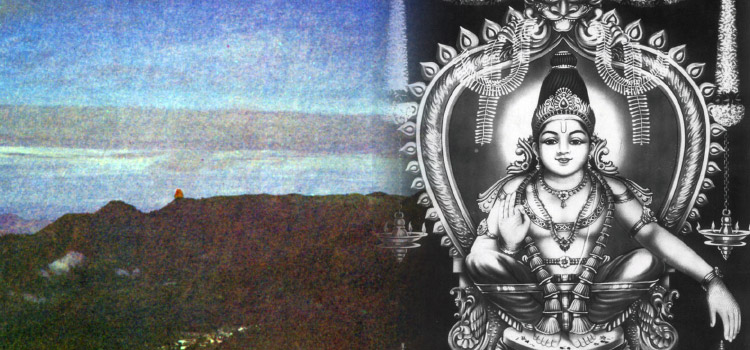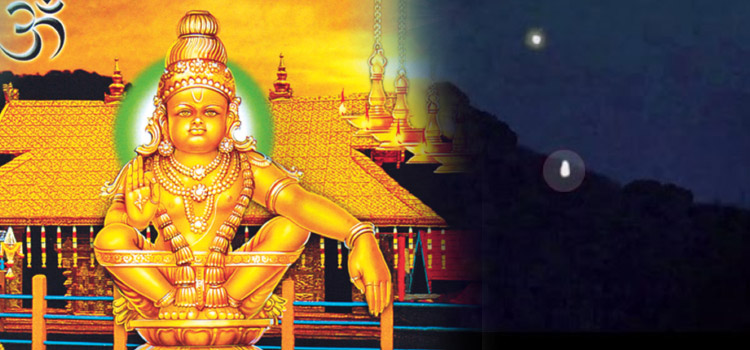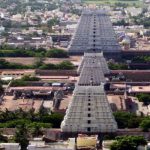Makara Jyothi and Makara Vilakku Are Different
Pilgrims who visit the hill shrine of Sabarimala in Kerala, which is the abode of the bachelor god, Lord Ayyappa, often confuse Makara Jyothi with Makara Vilakku. However, in reality, the former is a celestial and the latter, a human-made phenomenon. Makara Jyothi is nothing but the Ayyappa’s birth star, Uttara Phalguni that appears in the sky on the day of Makaram 1st in the Malayalam calendar. It can be seen immediately after the deeparadhana ceremony in the Sabarimala temple. One can see it appear south of the sanctum sanctorum of the temple. The Uttara Phalguni star can be seen in the sky every evening, after sunset. However, on this day, the Pandalam royals bring the Thiru abharanam or sacred ornaments of Lord Ayyappa to the temple. The star represents the presence of Lord Ayyappa and is called Makara Jyothi.
When Makara Jyothi is Celebrated
Witnessing the Makara Jyothi is the most significant event for the devotees of Lord Ayyappa. It usually happens on January 14. The royals bring the divine jewels to the temple in three boxes. When the boxes arrive, lakhs of devotees who have congregated at the hill shrine fervently chant ‘Saranam Ayyappa,’ and the entire mountain reverberates with the sound of their chants.
The Pandalam royal family are the sole custodians of the Thiru abharanam box where the deity’s jewels are stored. It has been in their safekeeping for many years. The box leaves its royal abode for the Ayyappa temple two days before the appearance of the Makara Jyothi. The person who carries the box goes into a trance and begins dancing as the box makes its way from Pandalam to the hill shrine of Sabarimala. It wends its way through Valiakoikkal Sastha temple at Pandalam, Ayiroor Puthiyakavu temple, Perunattil temple, Vlakkai, Nilakkal Siva temple, Vellachimala, Pampa, and Sabaripeedam before reaching the Sannidhanam around 6 pm on Makara Jyothi day.
When it reaches the Sannidhanam, the Mel Shanthi and the Thanthri receive the jewels, accompanied by the thundering sound of the Sarana chanting. The sacred ornaments in the box include a diamond crown, gold bracelets, necklaces, and a sword. The jewels are used to adorn the idol by the priests who perform a Pooja. Even as this is going on, a brilliant light appears in the northeastern side of the temple, at the opposite mountain in a place called Kantamala which is believed to be the abode of devas and rishis. The sighting of Makara Jyothi marks the end of the Sabarimala pilgrimage.

Makara Vilakku
On the night that the Makara Jyothi is sighted, Malikapurathamma, seated on an elephant, comes in a procession to the Pathinettampadi (18 steps) and returns to her abode. This marks the beginning of the Makara Vilakku festival. This is a seven-day festival, and the pilgrims stay back for it. They leave once the kuruthi Pooja (offering of chunnambu (slaked lime) and turmeric for the forest deities) is performed. Makara Vilakku is part of a ritual which is traditionally observed by tribals who live in Ponnambalamedu, the area where the Makara Vilakku appears. There is nothing occult or supernatural about the Makara Vilakku. The gods have nothing to do with it. On the contrary, it is a tribal practice which has existed for hundreds of years. Actually, there is a temple in Ponnambalamedu to which the government restricts public access.
The place is under the control of the Forest Department of Kerala. On the day – Makaram 1st – that the Uttara Phalguni star appears, the tribals also perform their rituals at the temple. Just as it happens in the Sabarimala temple, they perform Arathi, circling the fire around the idol. They light camphor and ghee in a vessel and circle it thrice around the idol. Devotees at the Sabarimala temple see this lamp or fire and assume that it’s the Makara Jyothi, but it’s the Makara Vilakku.



I don’t think the title of your article matches the content lol. Just kidding, mainly because I had some doubts after reading the article. https://accounts.binance.info/en/register-person?ref=JHQQKNKN